What are Perennial Weeds?
Perennial Weeds are longer lived plants that can survive winter or regrow from roots, rhizomes or tubers in spring after a period of dormancy. Many weeds that grow from seed ...

Unsightly, bright green clumps taking over your pristine lawn? You’re probably dealing with Winter Grass.
Winter grass is a common weed that poses a challenge to maintaining a healthy and pristine lawn in Australia. It is a long-lasting weed that can wreak havoc in lawns for months, with its root systems and prolific seed production quickly overtaking your lawn and returning year after year if left unattended.
In this article, we’ll provide valuable insights to help homeowners control winter grass, including how to identify it, methods for prevention and advice on herbicide application and natural remedies.
Let’s dive in.
Winter grass (Poa annua) is an annual grass weed that thrives in cool-season climates. It is identifiable by its fine texture, light green colour, and boat-shaped leaf tips.
Additionally, it often forms dense patches or clumps in lawns, especially during the cooler months. Its distinctive seed heads, resembling tiny panicles, are another characteristic feature that aids in identification.
It germinates in autumn and early winter and will continue to grow, start clumping and spreading as the winter continues. By early spring, winter grass is in full growth, shedding thousands of seeds into your turf for emergence the following year.
Winter grass’ ability to outcompete desirable turfgrass species and its unsightly appearance make it a common nuisance in Australian lawns.
You must treat winter grass in your lawn as soon as possible. However, not all chemicals are suitable for all turf types and care needs to be taken when selecting a product to use.
Here, we’ll look at 2 ways to control winter grass in your lawn safely using both chemical and natural methods.
Herbicides for winter grass are different from most as they act on the root system rather than on the leaf system like other poisons.
Selective herbicides such as Campbells Poa Chek and Envu Tribute are effective for controlling winter grass in established lawns. These herbicides target winter grass while sparing desirable turfgrass species.
Pre-emergent herbicides can prevent winter grass seeds from germinating. Applying pre-emergent herbicides in late summer or early autumn before winter grass seeds germinate can provide effective long-term control by inhibiting seedling establishment.
Tip: We recommend changing up the pre-emergent you use on your lawn. You need to rotate the products, or the winter grass will become accustomed to the active ingredients – it’s like antibiotics.
Winter grass must be treated at the right time of year, otherwise the herbicide will not effectively kill the weed. The best time to treat winter grass is in May, before you can even see the weed. You may still kill winter grass into June and sometimes July. However, the later you go in the winter, the more mature the grass becomes and the more difficult it becomes to kill.
Winter grass treatments in August or September simply will not work – the weed is just too strong and will easily outcompete the herbicide.
The more winter grass matures, the more difficult it is to kill, and it will often resist weed sprays. Expect to treat winter grass for a few years running, as the seed banks will take some time to deplete their stocks in the soil.
Natural control methods offer environmentally friendly alternatives to chemical treatments. Practices such as improving soil health and promoting dense turf growth can help outcompete winter grass. Additionally, regular dethatching and aerating can disrupt winter grass growth and promote a healthier lawn.
If winter grass hasn’t germinated, it is sometimes possible to control this weed by mowing it. However, as winter grass has a relatively low profile, it may not be possible to do this without scalping the nearby turf.
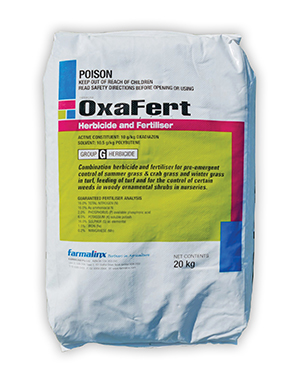
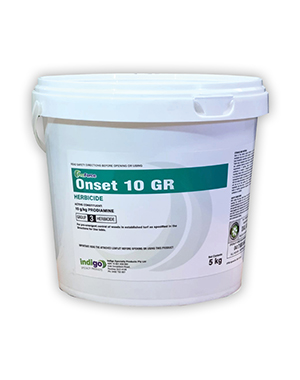
Onset 10GR is a granular pre-emergent herbicide offering up to 6-month weed germination protection from a broad range of grass weeds including Crabgrass & Summergrass, Parramatta Grass, Crowsfoot, Paspalum and Wintergrass. 5kg of Onset can treat up to 250sqm.
SHOP NOW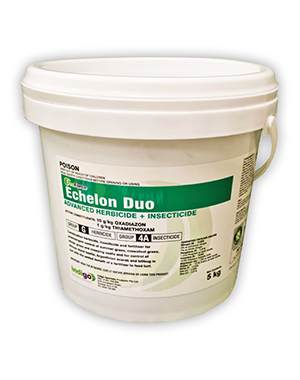
Echelon Duo 5kg – is a combination granular Herbicide, Insecticide and Fertiliser for the preemergent control of Summer Grass, Crowsfoot Grass, Wintergrass and Creeping Oxalis. For pests, Echelon Duo offers control of African Black Beetle, Argentinian Scarab and Billbug.
SHOP NOW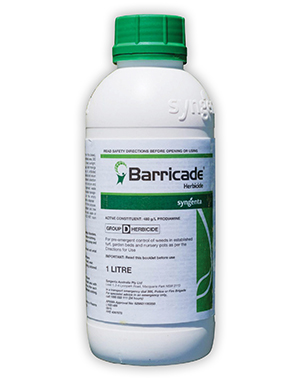
Barricade 1L is a pre-emergent liquid herbicide with the active ingredient Prodiamine (480 g/L) and used to prevent weeds such as Barnyard Grass, Crab Grass, Parramatta Grass, Rat’s Tail, Summer Grass, Crowsfoot Grass, African Lovegrass, Bahia Grass, Kentucky Blue Grass, Paspalum, Winter Grass, Creeping Oxalis, Cudweed, Prairie Grass, Ryegrass, Sow Thistle and Willowherb.
SHOP NOW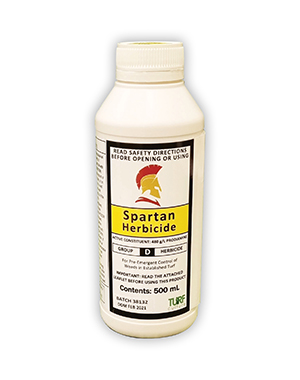
Spartan is one of the leading pre-emergent herbicides for the control of Crowsfoot Grass, Summer Grass, Winter Grass, Paspalum and other grassy weeds. With the active ingredient of Prodiamine (480g/L), Spartan is suitable for use on Zoysia, Kikuyu, Couch and Buffalo grasses.
SHOP NOWPost-emergent control of Winter Grass is also an option once the weed has already germinated. The post-emergent herbicide targets the Winter Grass root system and stunts the growth of the weed. However, unlike pre-emergent herbicide, post-emergent herbicides can not control new generations of the weed.
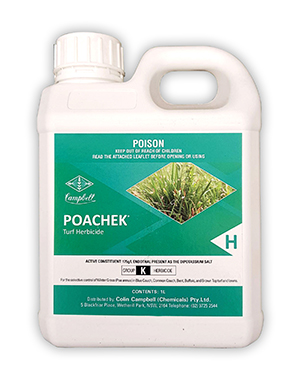
A healthy, well-maintained lawn is your first line of defence against winter grass invasion. Proper lawn care practices, including regular mowing, watering, and fertilising help promote dense turf growth, reducing opportunities for winter grass to establish itself.
For small infestations, we recommend hand pulling individual winter grass plants for effective removal.
Protecting your lawn from winter grass requires selective herbicide application, proper lawn maintenance and timely intervention.
By following the insights we recommend, homeowners can combat winter grass infestations and maintain a beautiful, weed-free lawn year round. With diligence and strategic management practices, you can keep winter grass at bay and enjoy a healthy, vibrant lawn that enhances your outdoor space.
Visit myhomeTURF’s online shop for lawn care, treatment and maintenance products.